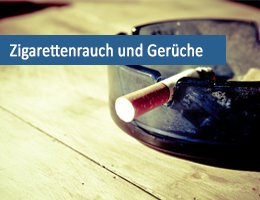Infection risk reducing
How strong should the power of your air purifier be?
For effective prevention, a CADR is recommended that can circulate 6 times the room volume per hour. Thus, room air cleaners contribute with a significant acceleration of fresh air distribution during ventilation and ensure clean and safe air. A high CADR results in a higher air flow rate while reducing noise pollution. This reduces the risk of the cleaning unit being switched off more often for noise reasons. In addition, aerosols in the air contaminated with germs, bacteria, and viruses can be reduced more effectively.
The most powerful Comedes units have a CADR of 380m³/h (Lavaero 900), 488m³/h (Lavaero 1000) and 600m³/h (Lavaero 1200).
Air purifiers do not replace AHA rules
The use of air cleaners can curb the risk of contracting diseases, but should not be considered the sole measure. Air cleaners are not a substitute for regular ventilation and adherence to the AHA rules (distance, hygiene, and everyday masks).
How can air purifiers prevent infections?
Viruses as well as bacteria spread by droplet infections, among other means. In this case, the pathogens are in droplets, which are released from the respiratory tract of the infected person into the room air when coughing, sneezing, exhaling or speaking. In droplet transmission, the larger particles as well as the smaller particles (in the form of the invisible liquid mist) come into direct contact with the mucous membranes of the recipient when inhaled, allowing the recipient to become infected with the virus or disease of the infected person.
Large droplets are often visible to the naked eye and are more than 5 µm in diameter. Small particles, so-called droplet nuclei (aerosols) have a diameter of less than 5 µm. Because of their small size, these enter the respiratory tract very deeply when inhaled, which is why the are particularly dangerous. SARS-CoV-2 has been observed to be viable in aerosols for up to 3 hours.
Air purifiers can be effective at this point, as they can reduce or at least neutralize the concentration of aerosols and thus the germs in the air.
What types of filters are there against bacteria and viruses?
To achieve a disinfecting effect, there are different possibilities, which can be implemented in air purifiers. These include the installation of UV lamps as well as the use of disinfecting nanosilver.
The use of UV light, as in the Lavaero 280 and Lavaero 1000, or antibacterial prefilters, as in the Lavaero 1000, produces a disinfecting effect, so that a risk of transmission can be additionally reduced.
HEPA filter
.HEPA filters (HEPA stands for High Efficiency Particulate Air) consist of an extremely fine-meshed mesh and can thus filter out minute particles down to a size of 0.3 micrometers from the air. These include pollen, particles contaminated with allergens, (fine) dust, spores, asbestos, bacteria, and aerosols.
In combination filters, the HEPA element is combined with other types of filters, but this does not diminish their effectiveness. The combination of different filter technologies leads to a convenient use of each benefit for the user.
UV-A light in combination with TIo2 filter
.UV-A light, at 315-400 nm (nanometers), most closely resembles ultraviolet light, which is still visible to the human eye. Colloquially, it is also called "black light."
By using UV-A light in combination with a titanium dioxide (TiO2) filter, the photocatalytic effect is triggered. This oxidizes organic compounds and thus unfolds a disinfecting effect, whereby germs and bacteria can be reliably reduced. The use of UV-C radiation in combination with the titanium dioxide filters is harmless, as no reaction products that are hazardous to health are released. A noticeable effect can also be achieved with the use of the relatively small, power-saving lamps.
Excursion UV-C light without photocatalysis
When air is directly irradiated with UV-C light, germs can be effectively killed. To achieve an effective disinfection effect, a high light output of the mercury lamps is necessary. However, this produces ozone. For this reason, Comedes does not use UV-C lamps for disinfection.
Antibacterial filters
Another option is to use antibacterial filters. Here, for example, HEPA filters doped with nano silver are available, such as in the Lavaero 900, or antibacterial prefilters, such as in the Lavaero 280 with smoker or allergy filter, or Lavaero 150 eco with nano silver prefilter




















